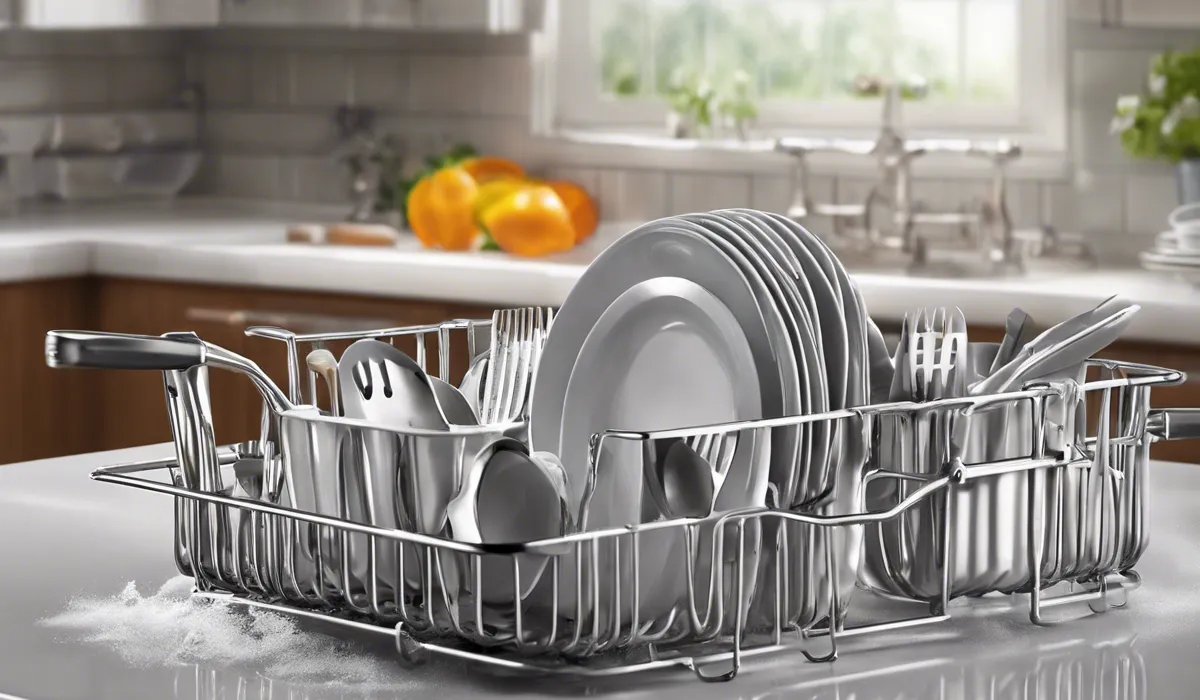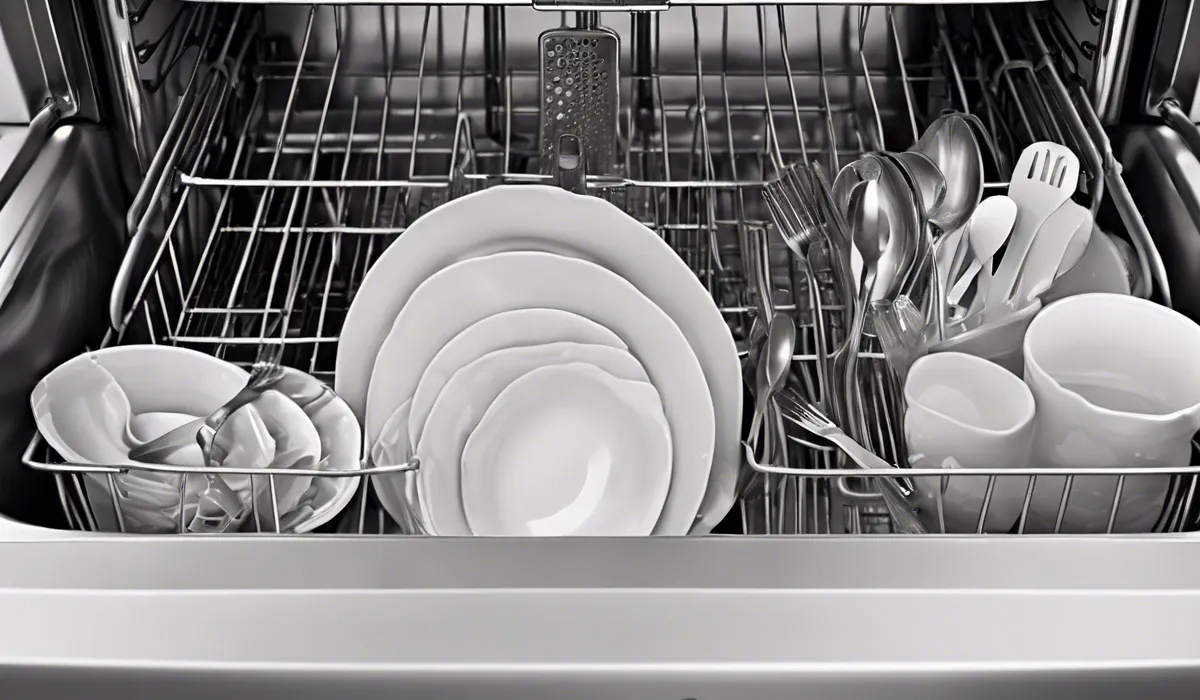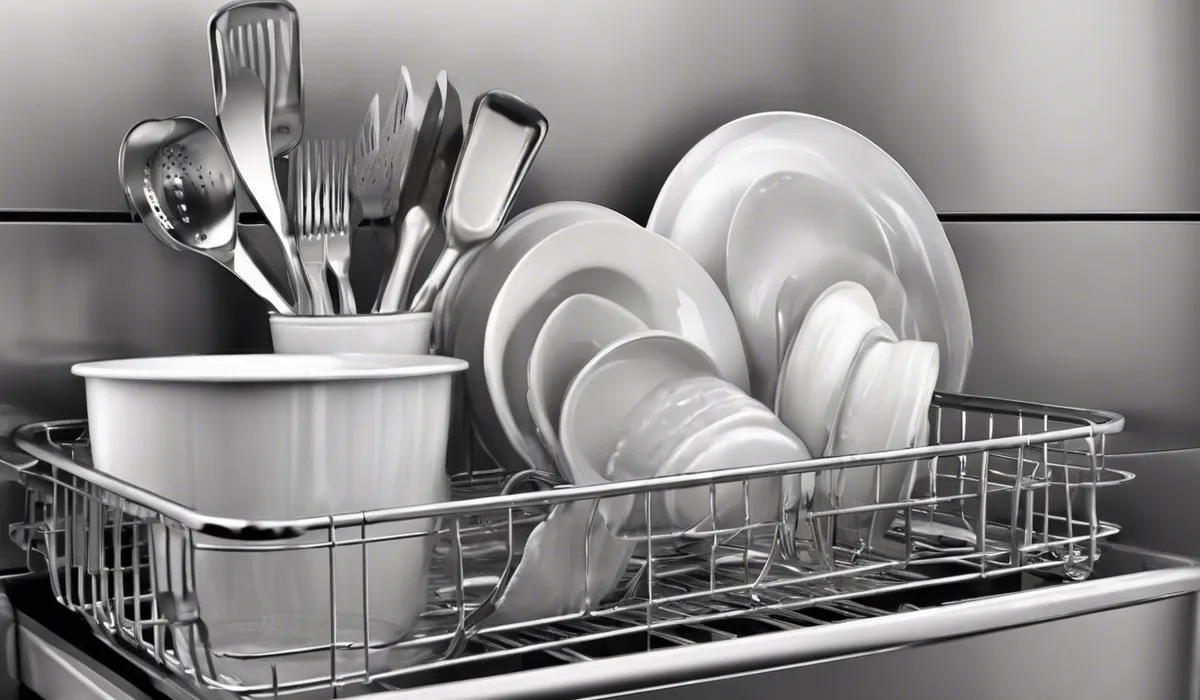How to Wash Utensils in Dishwasher: Sparkling Results!
To wash utensils in a dishwasher, place them in the cutlery basket with handles down. Avoid overcrowding to ensure water circulation. Use a gentle cycle for delicate items and a high-temperature setting for heavy soiling. Ensure dishwasher-safe materials only.
Preparing Utensils for Dishwashing

Removing Leftover Food from Utensils
Before placing your utensils in the dishwasher, it is crucial to remove any leftover food. Scrape off large food particles into the trash or compost bin.
This step helps prevent clogs and ensures your dishwasher can effectively clean the utensils without any obstruction. It is also a best practice for maintaining the longevity and efficiency of your dishwasher.
Pre-soaking Utensils with Tough Stains
Utensils with tough stains like dried-on pasta sauce or burnt food residue may require pre-soaking.
Fill your sink or a basin with warm water and a drop of dish soap, then let the utensils soak for a few minutes. This step helps to loosen the stains, making it easier for the dishwasher to do its job.
Arranging Utensils for Optimal Cleaning
For optimal cleaning, utensils should be arranged with space between them. Ensure that spoons and forks are not nesting together, as this can prevent water from reaching all surfaces.
Knives should be placed with the blade down for safety. This strategic arrangement allows for better water circulation and a more thorough clean.
Ensuring Dishwasher-Safe Materials
Check that all items are dishwasher-safe to avoid damage. Materials like plastic, ceramic, stainless steel, and glass are generally safe, but certain plastics may warp with heat.
Always look for the dishwasher-safe symbol on your utensils or refer to the manufacturer’s recommendations.
Loading the Dishwasher

Bottom Rack Loading Strategy for Pots, Pans, and Plates
Load your pots, pans, and plates on the bottom rack of the dishwasher. Place them facing downward and angled so that water can reach the inside surfaces. Space them out to avoid nesting, which can block water and detergent from cleaning effectively.
Top Rack Loading Tips for Glasses, Cups, and Lighter Items
The top rack is best for glasses, cups, and lighter items. Arrange these items between the tines, not over them, to prevent water spots and ensure stability during the wash cycle. Tilt them slightly to allow water to drain and to avoid pooling.
Placement of Silverware in the Utensil Basket
Place your silverware in the utensil basket with handles down, except for knives which should be handles up for safety. This arrangement exposes the dirty end to the spray, ensuring a better clean. Mix spoons, forks, and knives to prevent them from sticking together.
Avoiding Overcrowding for Better Water Circulation
Avoid overcrowding the dishwasher to ensure that water and detergent can circulate properly. This not only leads to cleaner dishes but also conserves energy and water by reducing the need for additional wash cycles.
Using the Dishwasher

Selecting the Right Detergent and Rinse Aid
Choose a detergent that is effective and suitable for your dishwasher. Tablets and pods are convenient options, while powders and gels offer adjustable amounts. Add rinse aid to aid drying and prevent water spots, especially if you have hard water.
Choosing the Appropriate Wash Cycle for the Utensil Types
Select a wash cycle that matches the type of utensils you are cleaning. Use a gentle cycle for delicate items and a more intense cycle for heavily soiled pots and pans. Consult your dishwasher’s manual for specific cycle recommendations.
Adjusting Temperature Settings if Available
For heavy soiling, a high-temperature setting can be more effective. However, for regular loads or delicate items, a normal temperature setting is sufficient. Adjust the settings according to your utensils’ needs.
Starting the Dishwasher and Monitoring for Issues
Once everything is set, start the dishwasher. Listen for unusual noises or errors, which could indicate a problem. If you notice anything out of the ordinary, consult the manual or contact a professional for assistance.
Unloading the Dishwasher and Checking for Cleanliness
After the cycle is complete, unload the dishwasher. Begin with the bottom rack to prevent water from top items dripping onto the clean dishes below. Check each utensil for cleanliness and dry any remaining moisture with a clean towel if necessary.
FAQs About Washing Utensils in Dishwasher
How should I load utensils in the dishwasher’s cutlery basket?
Place utensils in the cutlery basket with handles down to ensure proper cleaning, and avoid overcrowding to allow for water circulation.
Can I wash delicate items in the dishwasher?
Yes, you can wash delicate items in the dishwasher, but make sure to use a gentle cycle specifically designed for such items.
What dishwasher setting should I use for heavily soiled utensils?
For heavily soiled utensils, use a high-temperature setting to effectively remove tough food residues.
How do I know if my utensils are dishwasher-safe?
Check the manufacturer’s instructions or look for a dishwasher-safe label on the utensils to ensure they are suitable for dishwasher use.
Why is it important to not overcrowd utensils in the dishwasher?
Not overcrowding ensures that water and detergent can circulate properly, which is essential for achieving a thorough clean of all utensils.
Final Thoughts
When washing utensils in a dishwasher, it’s important to place them handle-down in the cutlery basket and to ensure they are not overcrowded for optimal water circulation.
Select a gentle cycle for delicate items and a higher temperature for more soiled utensils. Always confirm that the items are dishwasher-safe to avoid damage during the cleaning process.





